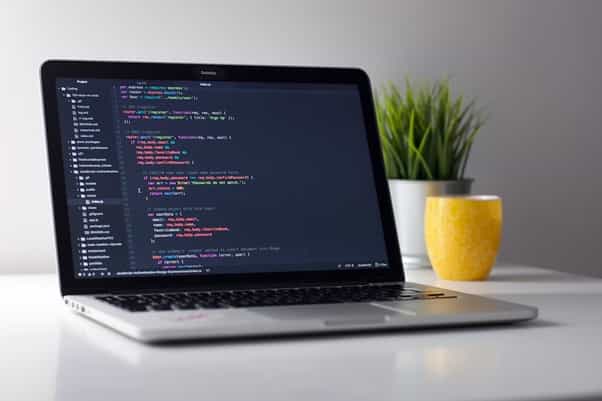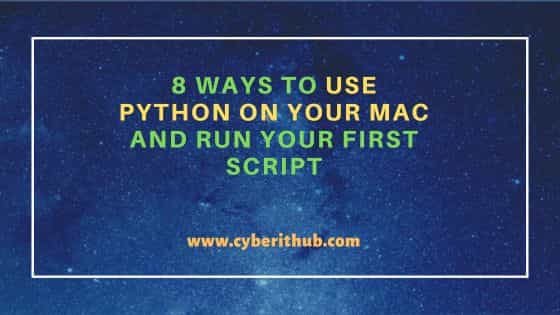Table of Contents
Ready to experience the power of Python and write your first script? Installing the newest version onto your Mac is easy, but how can you get started writing it? Here's an in-depth guide on setting up Python on a Mac as well as tips for running scripts from the command line. Dive into this comprehensive tutorial on programming on Mac with Python that will take you through every step so even beginners know what they're doing!

Do you have Python installed on your PC by default?
For quite a while, Macs sailed along with Python 2.7 pre-installed on the system - until Apple gave their official notice of removal in 2019 and followed through with that warning when they released macOS Monterey. But there's still hope! If your Mac is running between versions 10.8 to 12.3 then you should try launching Python from the Terminal app to see if it was left behind as part of legacy software installation options – now wouldn't that be lucky?
1. How to Check the Version of Python on Your Mac?
Need to find out which version of Python is available on your Mac? With just a few simple steps, you can check whether the pre-installed Python 2.7 or 3 is running on your system. Launch Terminal and use either 'python --version' for version 2 or 'python3 --version' for version 3 - in no time at all you'll get confirmation details about whichever edition has been activated! Unlikely, if you don't have Python pre-installed, all you need to do is download and install it. Here is the link where you can get the official version.
2. Writing Python Scripts in the Terminal
Unlock the power of Python3 and create 'Hello, World!' right in your very own terminal! Say goodbye to text editors or IDEs - all you need is a few keystrokes and you're set. Get ready for some exciting coding adventures as your experience with terminals reaches new heights!
3. How to Run Python Scripts?
If you're looking for an easy way to get your Python script up and running quickly, a text editor like vim or notepad++ is the perfect solution. Simply paste in your code, save it with a .py extension, and navigate to its directory using the terminal - then type 'python3 [script name]' into the command line followed by enter! You can even use vim right within the terminal itself too - simply input ‘vim [name of program].py’ and hit return; from there all that's left is esc+wq!. In no time at all, you'll be able to witness firsthand what this powerful programming language has to offer.
There is another interesting way - to use code from books. If you have any book on Python programming, you can use the scanner app to digitize it. Download the iOS app and you can not only convert a document to a digital PDF version but also convert PDF to docs. Thus, the scanning tool allows you to get code suitable for Python in almost an instant. It's only worth checking that the PDF scanner app interpreted everything correctly, as there may be problems with some special characters. In any case, scan docs are a great relief for those new to Python.
4. Install a Source-Code Editor on Your Mac
Ready to take your Python coding skills to the next level? If you're a Mac user, Visual Studio Code is an essential tool for transforming code into powerful apps and programs. With its lightweight yet efficient environment, VSCode supercharges productivity by making coding faster and easier than ever before! But how do you get started with this free code editor? First, be sure to download the archived contents from their official website; then move them directly into your Applications folder - that way they'll remain secure while giving easy access via macOS Launchpad. Finally, click New File on VSCode... And let those creative juices flow!
5. Command Line Arguments
Command line arguments are a powerful tool to streamline and improve production-ready code. With the sys module in Python, argv provides users with the ability to access command-line arguments as if they were individual items within a list. By leveraging this built-in feature of Python, individuals can more efficiently change variable inputs or file names without having to manually edit their program's code every time something changes. The result is reproducibility and efficiency for any size project!
6. Writing the Output of a Python Script to a File
Have a Python script you're itching to try out? Store the output in a txt file with ease! Simply create an empty folder, move your code into it, and type "python3 command_line.py 10 > output.txt". Once that's done, check the content of this newly created cli folder - there should be an 'output.txt' file ready for viewing!
7. How to Uninstall Python From Your Mac?
Are you considering switching to a different programming language on your Mac? If so, uninstalling Python is quite simple - all it takes are some quick steps in the Applications folder. To remove an individual version of Python from Finder, simply move its associated files into the Trash and enter your password when prompted for permission!
8. Uninstalling Python Framework From the /Library Directory
Get rid of all Python remnants from your Mac system by hitting the Command + Space bar keys to bring up Spotlight Search, opening Terminal, and entering this command in it: 'sudo rm -rf /Library/Frameworks/Python.framework'. This will remove all traces of the interpreter, standard library, and site-packages folder so even though you'll still have Python installed technically on your machine, it won't be usable anymore!
Conclusion
Python is a powerful and versatile programming language, capable of creating everything from web applications to machine learning projects. With the simple instructions outlined above, you now have the necessary tools to quickly get started on your own coding journey. So go ahead - open up a terminal window and let's start programming.


